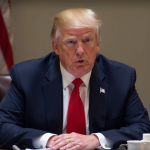The United States and European Union on Thursday released new details of their trade framework, providing clarity on tariffs for sectors including pharmaceuticals, semiconductors, and autos after weeks of uncertainty.
The framework, finalised late last month after protracted negotiations, set a blanket 15% tariff on EU exports to the US, alongside European commitments to purchase $750 billion worth of US energy and invest at least $600 billion in the American economy.
The joint statement outlined that the US will apply the higher of either its Most Favoured Nation (MFN) tariff rate or a 15% tariff on originating goods from the EU.
Starting September 1, only MFN duties will apply to several categories, including cork, aircraft and parts, generic pharmaceuticals and their chemical precursors.
Several Section 232 tariffs were capped at the 15% rate, covering sectors such as lumber, semiconductors, and pharmaceuticals.
The EU also committed to eliminating tariffs on all US industrial goods and expanding preferential access for US seafood and agricultural exports.
The latest statement added that Europe intends to substantially increase procurement of US defence equipment, even as it pursues its own defence buildup.
Pharmaceuticals under the spotlight
Europe’s pharmaceutical sector, a key exporter to the US, will see tariffs capped at 15%, without additional EU-wide tariffs stacking on top.
From September 1, Washington will apply its MFN drug pricing policy only to generic pharmaceuticals.
This policy links US drug prices to lower benchmarks abroad and is aimed at easing domestic drug costs.
Earlier this year, the Trump administration launched a Section 232 investigation into pharmaceutical imports, arguing they posed a national security risk.
Trump threatened tariffs as high as 250% on the sector while pressing drugmakers to cut US prices and shift production to American soil.
The pressure has already prompted investment pledges from firms including Novartis, AstraZeneca, and Roche, as well as price adjustments by Novo Nordisk and Eli Lilly.
Metals
On metals, the framework opens the possibility of discounted tariff rates for steel, aluminium, and derivative products under a quota system.
The joint statement said both sides intend to cooperate to guard against overcapacity in their domestic markets while ensuring secure bilateral supply chains.
The European Union and the United States said they “intend to consider the possibility of cooperating on ring-fencing their respective domestic markets from overcapacity, while ensuring secure supply chains between each other,” according to a joint statement on steel and aluminium.
Auto sector impact
On automobiles, the US and EU agreed to a conditional 15% tariff on European cars and parts.
A senior US official said the tariff would apply only after Brussels introduces legislation to reduce its industrial duties.
The agreement also provides for mutual recognition of auto standards between the two sides.
The prospective 15% tariff marks a sharp reduction from Trump’s earlier threat of 30% and cuts nearly in half the current US rate of 27.5% on European autos.
Industry groups remain concerned, with the German Association of the Automotive Industry (VDA) warning that such tariffs would cost German companies billions annually and weigh on their transition efforts.
The post US, EU outline trade deal details on pharma, semiconductors and autos appeared first on Invezz







